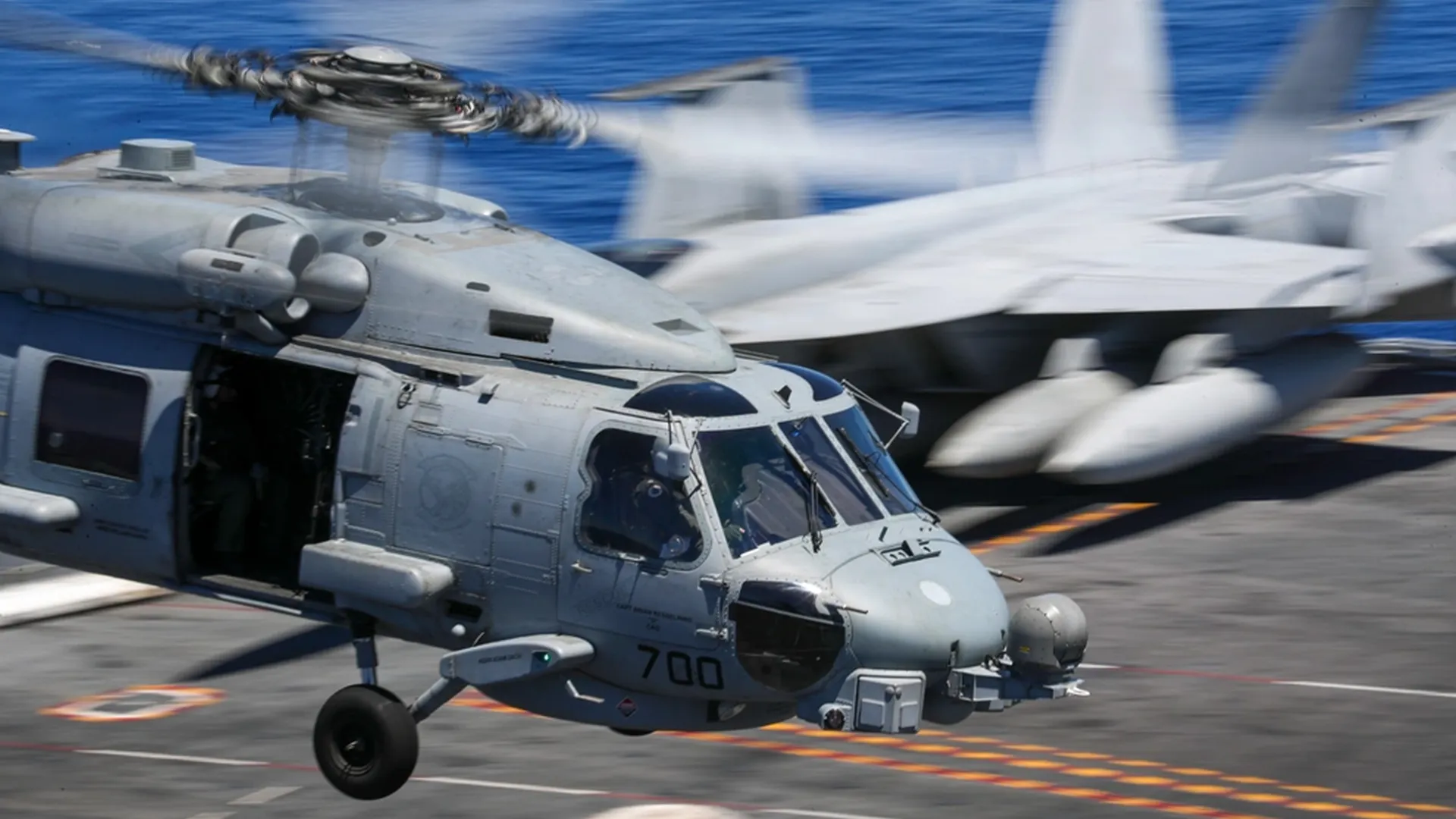Copyright Interesting Engineering

On Sunday, October 26, 2025, two US air assets were lost within the span of 30 minutes of one another in the South China Sea. Ostensibly a pair of unlucky accidents, the location and timing have raised some to wonder if there could be more to them than meets the eye. In case you are unaware, an MH-60R “Sea Hawk” helicopter and an F/A-18 “Super Hornet” operating from the USS Nimitz (CVN-68) both went down during routine operations. Thankfully, all five crew members were rescued, and early statements from the Navy offered little beyond the standard “cause under investigation.” Such an event, let alone two within less than an hour of each other, is both unfortunate and potentially very suspicious. Let’s find out why. Mitigating circumstances The aircraft carrier in question, the USS Nimitz, is one of the US Navy’s oldest operational carriers, having been first commissioned in May 1975. Scheduled for retirement in 2026, the ship’s age complicates the analysis of events. This is due to inevitable issues relating to mechanical faults, maintenance fatigue, and, of course, human error. Furthermore, carrier operations are among the most complex peacetime activities humans undertake. Such operations often involve dozens of aircraft cycling through launch and recovery, with fuel and munitions being moved across steel decks, and night operations requiring precise choreography. That said, two unrelated aircraft from the same ship failing within half an hour is highly unusual. In response, President Trump, en route to Japan, downplayed any suspicion by suggesting “bad fuel” might be to blame. While plausible on the surface, experts note that if this were the cause, it would likely have affected more than two aircraft. The timing of the events is also suspicious, as it coincided with the start of an Asia tour expected to include meetings with Xi Jinping. That said, it is worth noting that China’s Foreign Ministry offered assistance in the search and rescue operation. However, they did use the opportunity to condemn US “shows of force” in the region. Highway to the “Gray Zone” Beyond geopolitical posturing, the crashes immediately sparked speculation that something more than coincidence was at play. This is especially concerning given that Chinese radar, sensors, and electronic warfare platforms blanket the South China Sea. Beijing’s so-called Gray Zone doctrine is built precisely on such ambiguous confrontations: actions too subtle to trigger open conflict but potent enough to test, confuse, or deter adversaries. So, you may well ask, “Could an electronic warfare (EW) or directed-energy weapon (DEW) have interfered with the aircraft?” Theoretically, yes, but doing so in the real world is a wholly different kettle of fish. China’s People’s Liberation Army (PLA) Air Force and Navy both operate advanced jamming aircraft, such as the J-16D, equipped with pods that can disrupt radar, GPS, and datalinks across wide areas. Furthermore, the PLA also claims to field high-power microwave (HPM) systems capable of disabling or scrambling unshielded electronics. Within its anti-access/area-denial (A2/AD) network (which stretches across artificial island outposts and surface vessels), these tools could be tested in low-risk ways. GPS spoofing and other shenanigans If the Sea Hawk and Super Hornet experienced simultaneous electronic interference, that might explain the loss of control or cascading avionics failure. It could even have been a cyber intrusion affecting shared systems on the carrier. EW attacks can disrupt systems such as GPS navigation, radar altimeters, fly-by-wire controls, and encrypted communications, all of which modern aircraft rely on to operate. Any interruption of such systems (altitude and location data or fly-by-wire systems) could dramatically increase the risk of crashes when landing (especially in bad weather or low-visibility scenarios). When multiple subsystems are impacted in this manner, the aircraft’s onboard software may attempt to “correct” itself using corrupted data. This can lead to over-corrections, stall warnings, or control lockouts. But with such claims, the real challenge is proving it. DEW or cyber signatures are of very short duration and are, all too often, indistinguishable from natural faults unless data recorders capture precise anomalies. Old sea dogs, new problems That all said, the age of the USS Nimitz and the ever-present problem of human error cannot be ruled out either. The US Navy has lost several Super Hornets (four in total) this year, with most of the losses being non-combat-related mishaps. Decades of high-tempo carrier deployments strain airframes, pilots, and carrier crew members alike. The USS Nimitz, now half a century old, carries legacy infrastructure designed before modern electromagnetic-environmental standards were fully integrated. Bad fuel, hydraulic contamination, corrosion, or software glitches can cause catastrophic failures, sometimes in clusters if underlying maintenance issues exist. To this end, while the loss of two aircraft in short order seems suspicious, it could be explained through pure chance. Furthermore, the Navy’s safety culture, although rigorous, still relies on human oversight. A single procedural lapse replicated across two aircraft could yield exactly the kind of coincidence that can fuel conspiracy theories. To this end, while the recent accidents may seem suspicious, they could also be predictable when considering all the compounding issues at hand. Ambiguity as a weapon Another interesting point is that both the US and Chinese governments have incentives to keep things vague. For Washington, admitting even the possibility of a hostile interference event risks public pressure for retaliation or escalation before evidence exists. For Beijing, plausible deniability is the essence of grey-zone warfare, effectively projecting capability without confrontation. The US, for its part, can claim proof of Chinese electronic aggression. China, on the other hand, can quietly point to American vulnerability, reminding allies that the Western Pacific’s balance of power is not set in stone. To this end, such ambiguity can become a very powerful weapon. Never let a crisis go to waste, if you like. What comes next Looking ahead to a possible resolution, the Navy’s investigation is expected to take several months. If telemetry or flight recorder data indicate anomalous electromagnetic activity, the findings may remain classified. But transparency (at least in broad outline) is vital. Ambiguity fuels risk, and risk, sadly, often fuels the potential for escalation. For engineers and defense planners, the lesson is clear: systems must not only survive stress, but deception. Shielding, redundancy, and secure architectures are no longer “nice-to-have” considerations; they are fast becoming necessities. For policymakers, the takeaway is equally clear. Accidents in a contested zone are never just accidents; they can, and often do, have significant geopolitical and public relations implications.



